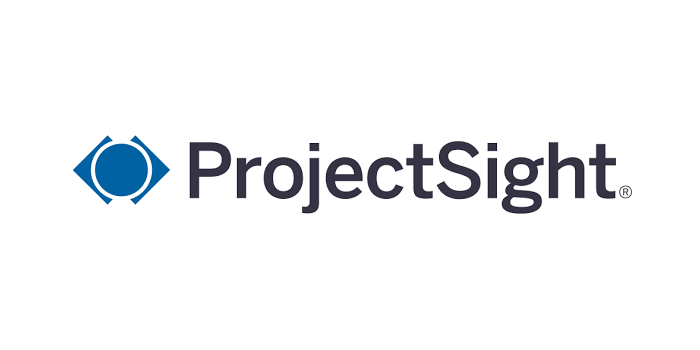AGC announces that 75% of construction firms plan to expand headcount and ABC predicts stable 2018 construction economy
Seventy-five percent of construction firms plan to expand headcount in 2018, contractors are optimistic about strong economy, tax & regulatory cuts
Seventy-five percent of construction firms plan to expand their payrolls in 2018 as contractors are optimistic that economic conditions will remain strong as tax rates and regulatory burdens fall, according to survey results released today by the Associated General Contractors of America and Sage Construction and Real Estate. Despite the general optimism outlined in Expecting Growth to Continue: The 2018 Construction Industry Hiring and Business Outlook, many firms report they remain worried about workforce shortages and infrastructure funding.
“Construction firms appear to be very optimistic about 2018 as they expect demand for all types of construction services to continue to expand,” said Stephen E. Sandherr, the association's chief executive officer. “This optimism is likely based on current economic conditions, an increasingly business-friendly regulatory environment and expectations the Trump administration will boost infrastructure investments.”
Respondents are very optimistic about demand for all types of construction services as measured by the net positive reading – the percentage of respondents who expect a market segment to expand vs. the percentage who expect a market segment to contract. The net positive reading for all types of construction is 44 percent, the highest yet recorded in the association’s Outlook survey series.
Broken down by market segment, contractors nationwide are most optimistic about the private office market segment, with a 22 percent net positive reading. This is followed by the other transportation and retail, warehouse & lodging segments, both of which had a 21 percent net positive reading. Water & sewer construction had a net positive reading of 20 percent; K-12 construction had a net positive reading of 18 percent and highway and hospitality construction both had a 17 percent net positive reading.
Respondents were only slightly less optimistic about growing demand in other segments. There is a 16 percent net positive for both multifamily residential and public building segments, followed by a 13 percent net positive reading for power construction, an 11 percent net positive for higher education construction and an 8 percent net positive for federal construction.
Association officials noted that 75 percent of firms say they will increase their headcount in 2018, up slightly from 73 percent last year. Most of the hiring will only expand headcounts by a slight percentage per firm, however. Half of firms report their expansion plans will only increase the size of their firm by 10 percent or less. Meanwhile, only five percent of firms report plans to expand their headcount by more than 25 percent above their current size. Only three percent of respondents expect to reduce headcount, down from six percent last year.
Association officials noted that firms in many parts of the country are already adding to their headcounts. According to a new analysis of Labor Department data the association is releasing today, construction employment increased in 255 out of 359 metro areas between November 2016 and November 2017. Among the fastest growing metro areas are Riverside-San Bernardino-Ontario, California; New York City and Cheyenne, Wyoming. Click here for the metro employment figures.
Even as firms expand headcount, an overwhelming majority – 82 percent – of firms expect it will either become harder, or remain difficult to recruit and hire qualified workers in 2018, up from 76 percent last year. In addition, 78 percent of firms report they are currently having a hard time finding qualified workers to hire, up from 73 percent at the start of last year.
Firms continue to take steps to address these growing workforce shortages. Sixty percent of firms report they have increased base pay rates, up from 52 percent last year. Thirty-six percent have provided incentives and/or bonuses, up from 35 percent last year. Twenty-four percent have increased contributions and/or improved employee benefits to cope with workforce shortages. Meanwhile, 56 percent of firms report they plan to increase investments in training and development, up from 52 percent at the start of 2017.
“While workforce issues remain their top concern, many contractors are also worried about competition and the impact of decisions made in Washington on their operations,” said Ken Simonson, the association's chief economist. He noted that 39 percent of firms said increased competition for projects was one of their biggest concerns for the year. Meanwhile, 28 percent of firms listed growth in federal regulations as one of their top concerns and 24 percent said one of their concerns was a lack of new infrastructure investments.
Officials with Sage noted that firms appear to be embracing information technology to help address workforce shortages and tight competition. They noted that 50 percent of firms say they currently spend one percent or more of their revenue on information technology, up from 47 percent in 2017. In addition, 43 percent of respondents report they will increase their information technology investments in 2018 compared to the prior year.
They added that information technology can be strategically applied to increase productivity of current staff and compete for more work. They said that helps explain why 52 percent of contractors indicate they currently have formal information technology plans that support business objectives, up from 47 percent last year. An additional eight percent of contractors report they plan to create a formal information technology plan in 2018.
“Increased competition for projects is driving contractors to advance their use of not only building information modeling, but cloud technologies,” said Jon Witty, vice president and general manager for Sage Construction and Real Estate, North America. “This is particularly evident in the use of cloud-based mobile solutions on the job sites, where contractors are using mobile software for daily field reports, field access to customer and job information, employee time tracking and approval and the sharing of drawings, photos and documents.”
Association officials noted that contractors’ overall optimism for 2018 is likely based on two key assumptions: that tax cuts will lead to stronger demand and that the Trump administration will finally deliver on its promise to boost investments in infrastructure. They said that the best thing Washington officials can do to make sure that federal tax cuts deliver on their potential is to continue rolling back needless regulatory burdens.
“The administration must also deliver on its promise to boost investments in infrastructure,” Sandherr said, noting the association has already been working aggressively to push for new investments. “And Congress and the Trump administration need to take steps to address chronic workforce shortages by passing a new Perkins Act and making it easier for local officials to set up construction-focused career and technical education programs.”
Sandherr added that the association would continue to lead efforts to encourage new federal, state and local measures to rebuild the pipeline for recruiting and preparing the next generation of construction professionals. And the association would also remain committed to working with administration officials to help identify regulations that can be improved and others that can be removed.
“In other words, as long as federal officials continue to work to boost infrastructure investments, reduce regulations and support workforce development, 2018 will be a strong year for the construction industry,” Sandherr said.
The Outlook was based on survey results from over 1,000 firms from 49 states and the District of Columbia. Varying numbers responded to each question. Contractors of every size answered over 20 questions about their hiring, workforce, business and information technology plans. Click here for Expecting Growth to Continue: The 2018 Construction Hiring and Business Outlook report. Click here for the survey results.
ABC Chief Economist Predicts Stable 2018 Construction Economy
Associated Builders and Contractors (ABC) Chief Economist Anirban Basu predicts stability for the construction industry’s economy and expanding nonresidential construction spending in 2018. While construction project backlog and contractor confidence remain high heading into the new year, Basu warns there are risks to the 2018 outlook as a number of potential cost increases could come into play.
“With wage pressures building, healthcare costs surging and fuel prices edging higher, inflation is becoming more apparent,” Basu said. “That could translate into some meaningful interest rate increases in 2018, which all things being equal is not good for construction spending. The stock market’s performance has been simply brilliant. But what goes up can go down.”
Basu added that asset prices might head in a different direction in 2018, including commercial real estate prices. Segments like hotels, office buildings and apartments have helped to fuel construction spending in recent years. If the value of properties begins to stagnate or worse, construction spending momentum will eventually wind down. The impact of this may not be felt in 2018, however, but in out years, Basu said.
“For now, there is plentiful momentum,” said Basu. “A recent reading of the Conference Board’s Index of Leading Economic Indicators suggests that the U.S. economy will enter 2018 with substantial momentum. Corporate earnings remain healthy. Global growth is accelerating. Consumers are upbeat. Tax cuts could fuel faster business spending. All of this suggests that the construction recovery that began in earnest in 2011 may have a few more birthdays ahead.”
Read Basu’s full 2018 construction economic forecast in Construction Executive magazine.













